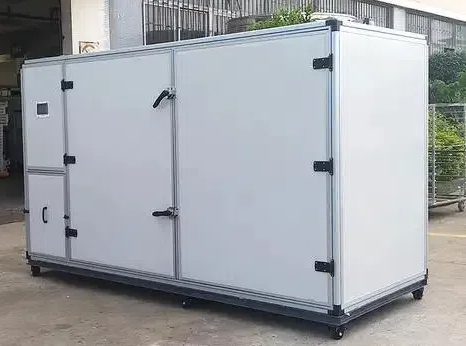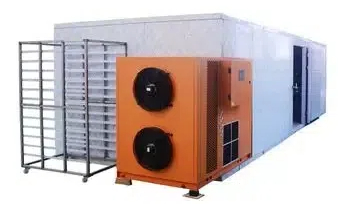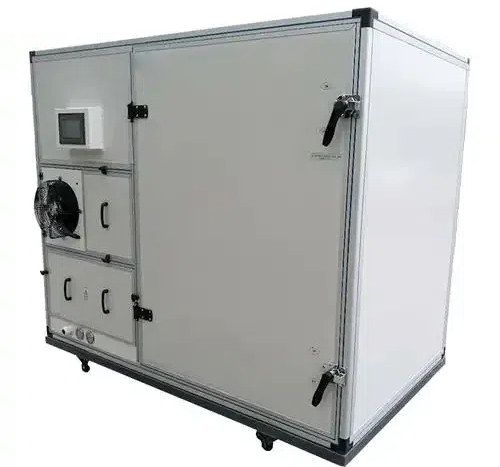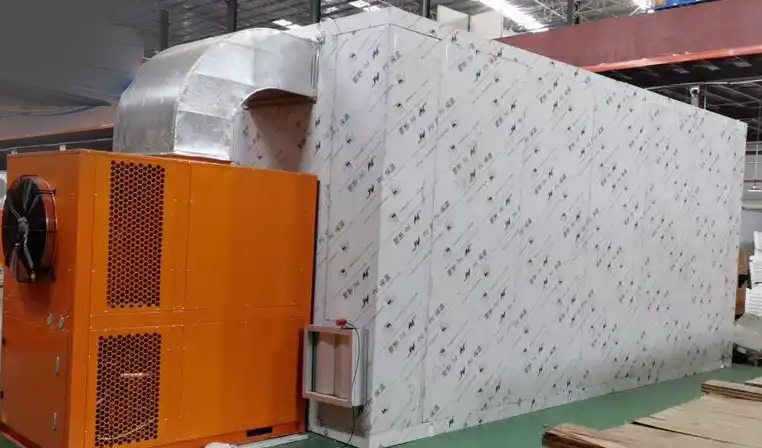
Content Menu
● Introduction to Heat Pump Dryers
● Understanding the Basics of Heat Pump Technology
● How Heat Pump Dryers Operate Without External Venting
>> Closed-Loop System
>> Energy Efficiency
● Applications in Food Drying
>> Benefits of Using Heat Pump Dryers for Food
● The Process of Food Drying with Heat Pump Dryers
● Advantages of Heat Pump Dryers in Food Processing
>> Improved Quality
>> Reduced Environmental Impact
>> Space Efficiency
>> Flexibility in Operation
● Maintenance and Care for Heat Pump Dryers
● Conclusion
● Frequently Asked Questions
>> 1. What is the main advantage of using a heat pump dryer for food drying?
>> 2. Can heat pump dryers be used for all types of food?
>> 3. How does a heat pump dryer differ from a traditional dryer?
>> 4. What maintenance is required for heat pump dryers?
>> 5. Are heat pump dryers energy-efficient?
Introduction to Heat Pump Dryers
Heat pump dryers are an innovative solution for drying clothes and other materials, utilizing advanced technology to achieve efficient drying without the need for external venting. This technology is particularly beneficial in various applications, including food drying, where maintaining the quality and nutritional value of the product is essential. In this article, we will explore how heat pump dryers operate, their advantages, and their applications in the food industry.

Understanding the Basics of Heat Pump Technology
Heat pump technology is based on the principles of thermodynamics, specifically the refrigeration cycle. A heat pump dryer works by transferring heat from one place to another, using a refrigerant that circulates through the system. The process involves three main components: the evaporator, the compressor, and the condenser.
1. Evaporator: The refrigerant absorbs heat from the air inside the dryer, causing it to evaporate and turn into gas.
2. Compressor: The gas is then compressed, which increases its temperature and pressure.
3. Condenser: The hot gas passes through the condenser, where it releases heat to the air, causing the refrigerant to condense back into a liquid.
This cycle repeats continuously, allowing the dryer to maintain a consistent temperature and humidity level, which is crucial for effective drying.
How Heat Pump Dryers Operate Without External Venting
One of the most significant advantages of heat pump dryers is their ability to operate without external venting. Traditional dryers expel hot, moist air outside, which can lead to energy loss and require complex installation. In contrast, heat pump dryers recycle the air within the unit, making them more energy-efficient and versatile.
Closed-Loop System
Heat pump dryers utilize a closed-loop system, meaning that the air used for drying is recirculated within the machine. This system allows the dryer to maintain a stable environment, reducing energy consumption and improving drying efficiency. The moisture extracted from the materials is collected in a reservoir or drained away, eliminating the need for venting.
Energy Efficiency
Heat pump dryers are known for their energy efficiency. They operate at lower temperatures compared to traditional dryers, which not only saves energy but also protects the integrity of the materials being dried. This is particularly important in food drying, where high temperatures can degrade the quality and nutritional value of the product.

Applications in Food Drying
Heat pump dryers are increasingly being used in the food industry for drying fruits, vegetables, herbs, and other products. The ability to control temperature and humidity levels precisely makes them ideal for preserving the quality of food items.
Benefits of Using Heat Pump Dryers for Food
1. Nutritional Preservation: By operating at lower temperatures, heat pump dryers help retain the nutritional value of food products, ensuring that vitamins and minerals are preserved during the drying process.
2. Flavor Retention: The controlled environment prevents the loss of essential oils and flavors, resulting in better-tasting dried products.
3. Reduced Energy Costs: The energy-efficient design of heat pump dryers leads to lower operational costs, making them an attractive option for food manufacturers.
4. Versatility: Heat pump dryers can be used for a wide range of food products, from fruits and vegetables to meats and fish, making them a versatile tool in food processing.
The Process of Food Drying with Heat Pump Dryers
The food drying process using heat pump dryers involves several steps:
1. Preparation: Food items are washed, cut, and pre-treated if necessary. This step may include blanching vegetables or slicing fruits to ensure even drying.
2. Loading: The prepared food is loaded into the dryer on trays or racks, allowing for proper air circulation.
3. Drying: The heat pump dryer operates by circulating warm air around the food items, extracting moisture while maintaining optimal temperature and humidity levels.
4. Cooling: Once the drying cycle is complete, the food is allowed to cool before packaging. This step helps prevent condensation and maintains the quality of the dried product.
Advantages of Heat Pump Dryers in Food Processing
Heat pump dryers offer several advantages over traditional drying methods, particularly in food processing:
Improved Quality
The ability to control the drying environment allows for better quality dried products. Heat pump dryers minimize the risk of over-drying or under-drying, which can affect the texture and taste of food items.
Reduced Environmental Impact
By using less energy and eliminating the need for external venting, heat pump dryers contribute to a lower carbon footprint. This is increasingly important for businesses looking to adopt sustainable practices.
Space Efficiency
Heat pump dryers can be installed in smaller spaces compared to traditional dryers, which require extensive ductwork for venting. This makes them ideal for facilities with limited space.
Flexibility in Operation
Heat pump dryers can be used for various drying applications, from small-scale operations to large industrial processes. Their versatility makes them suitable for different types of food products and drying requirements.
Maintenance and Care for Heat Pump Dryers
To ensure optimal performance and longevity of heat pump dryers, regular maintenance is essential. Here are some tips for maintaining your heat pump dryer:
1. Clean the Filters: Regularly check and clean the air filters to ensure proper airflow and efficiency.
2. Inspect the Condenser: Keep the condenser clean and free from dust and debris to maintain effective heat exchange.
3. Check for Leaks: Inspect the refrigerant lines for any signs of leaks, which can affect the dryer’s performance.
4. Follow Manufacturer Guidelines: Always refer to the manufacturer’s instructions for specific maintenance recommendations.
Conclusion
Heat pump dryers represent a significant advancement in drying technology, offering numerous benefits for both residential and commercial applications. Their ability to operate without external venting makes them an ideal choice for food drying, where maintaining quality and efficiency is paramount. As the demand for energy-efficient and versatile drying solutions continues to grow, heat pump dryers are poised to play a crucial role in the food industry.

Frequently Asked Questions
1. What is the main advantage of using a heat pump dryer for food drying?
The main advantage is the ability to preserve the nutritional value and flavor of food while operating efficiently without external venting.
2. Can heat pump dryers be used for all types of food?
Yes, heat pump dryers are versatile and can be used for a wide range of food products, including fruits, vegetables, meats, and herbs.
3. How does a heat pump dryer differ from a traditional dryer?
Heat pump dryers recycle air within the unit and operate at lower temperatures, while traditional dryers expel hot air outside and typically operate at higher temperatures.
4. What maintenance is required for heat pump dryers?
Regular maintenance includes cleaning filters, inspecting the condenser, checking for refrigerant leaks, and following manufacturer guidelines.
5. Are heat pump dryers energy-efficient?
Yes, heat pump dryers are known for their energy efficiency, consuming significantly less energy compared to traditional dryers.












